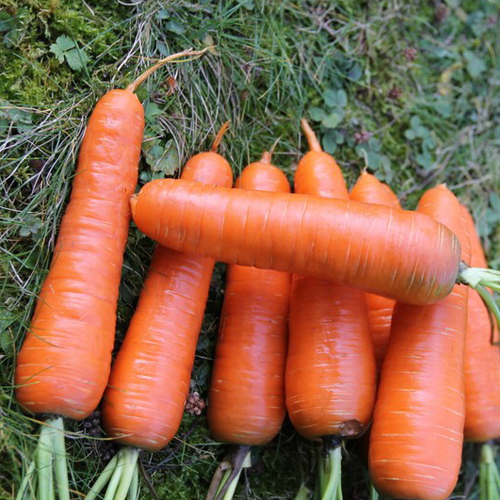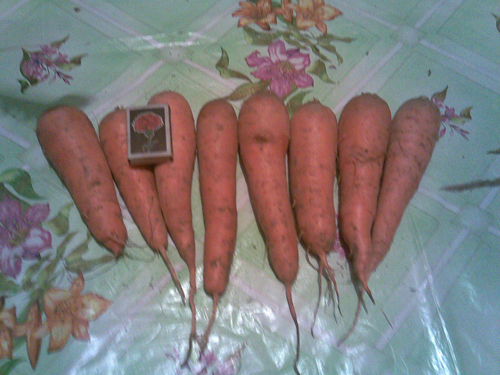Kuroda carrot variety
There are a lot of known varieties of carrots, and no less popular varieties are derived from them. For example, the old French Chantenay (Chantane) served as the basis for creating a variety called Kuroda, which will be discussed. In 2004, breeders from the Sakata company announced the creation of a novelty, after 3 years the variety was entered into the State Register of Plants of the Russian Federation in the North Caucasus region (Republic of Dagestan, Ingushetia, Adygea, Chechen, Kabardino-Balkarskaya, Crimea, RNO-Alania, Krasnodar and Stavropol Territory, Rostov Region). Also, the growing area covers Moldova and Ukraine. Our hero is not a hybrid.

Description
The rosette is semi-spreading, consists of long light green leaves of medium and large dissection. Kuroda belongs to the Shantenay variety. Carrot root crop is conical in shape with a blunt tip, the head is even. The average size is 15 - 18 cm. Weight is from 90 to 160 grams, sometimes over 200 grams. The skin is thin, smooth, the eyes are numerous, but shallow. The color is even, bright orange. The pulp is firm, tender and juicy. The core is small. Colored, like the pulp, orange. Good taste. 100 grams of raw matter contains: 10.4 - 14.8% dry matter, 6.7 - 10% total sugar, up to 20.4 mg of carotene.

Characteristics
- Kuroda belongs to the early maturing, which means that it takes about 2 months from germination to harvesting, sometimes a little more, depending on weather conditions;
- the seeds sprout together;
- marketable yield of carrots is good. On average, it is 230 - 420 c / ha, which is 40 - 80 c / ha higher than the standards Losinoostrovskaya 13 and Shantenay 2461. In the Krasnodar Territory, a record figure was recorded - 436 c / ha;
- the yield of marketable products of the variety is 85 - 96%
- Kuroda is plastic, famous for its resistance to hot weather;
- does not go to the arrow, does not crack;
- despite the fact that it belongs to the early varieties, keeping quality is quite good.

Agrotechnics
The seed is planted starting in mid-April. The place must be sunny. The ideal soil is humus-rich loam with a deep arable layer. But it can also grow on heavy soils, pre-treated. Seeding depth is no more than 1 cm. The distance between plants in a row is at least 5 cm. Row spacing is up to 20 cm. Carrots are demanding for watering only from the moment of emergence. After the appearance of 4 - 5 true leaves, the frequency of watering is reduced, and if the amount of natural precipitation is sufficient, then it is possible not to additionally moisten the soil at all. Of the fertilizers, Kuroda prefers phosphorus-potassium fertilizers, with a small proportion of nitrogen.
To get a second harvest, you can sow seeds in the middle of summer - the second half of July. You can sow before winter, and then the harvest will be early in the spring.
Unpretentious, fruitful and very tasty, these carrots are in demand among lovers of early vegetables. The possibility of its long-term storage is also appreciated. Agrotechnology is quite simple, cultivation of the variety will not cause much trouble.








